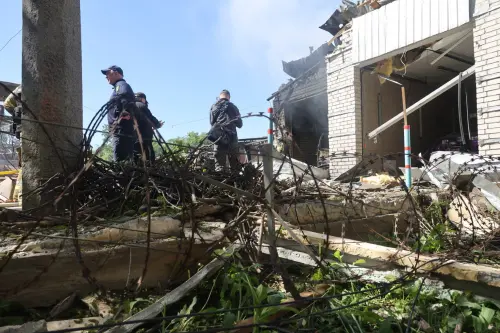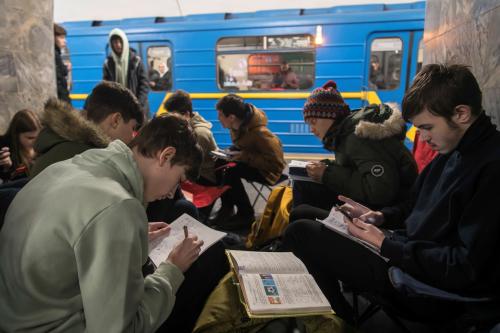Since I last wrote about displacement in Syria some 10 weeks ago, the situation has become worse. Much worse. More Syrians have died in the violence (30,000 in mid-October compared with 19,000 in late July). The number of refugees has almost tripled – from 117,000 to 335,000.
According to the Syrian government there are still over a million internally displaced persons (IDPs) inside the country. But these figures are all estimates. While UNHCR does a good job of counting the number of refugees who register with their offices, there are unknown numbers of Syrians who don’t, or can’t, register.
Keeping track of movement within Syria, is obviously much more difficult, particularly when many IDPs don’t want to be counted by the government – or anyone – and are likely in hiding. Even if we know how many there are, that says nothing for the difficulties in assisting them, as most humanitarian agencies simply do not have access to them.
The governments in the region are to be commended for keeping their borders (mostly) open to desperate Syrians fleeing the violence. And yet the humanitarian community is scrambling to secure the funds to support the refugees as they arrive in neighboring countries. Less than 40 percent of the UN’s appeal for humanitarian needs in the region has been pledged. And while conditions are bad now, they are likely to get worse as winter sets in. Syrians living in tents in Jordan have already protested their miserable living conditions; when temperatures drop to freezing, it will be even worse.
The Damocles Sword of regional crisis is perilously close to falling. The recent military exchanges between Turkey and Syria are indications that the conflict is becoming an international one and have spurred NATO to draw up a defense plan of Turkey. The New York Times reported today that 150 US troops have been dispatched to Jordan to help deal with the refugee crisis, as well as be in position to respond to further escalation of the Syrian crisis.
It’s a dangerous situation all around and solutions are not easily at hand, as my Brookings colleagues have explained. Nevertheless, when political or military solutions are brought to the table, they do need to understand and take into account the needs of the displaced. The movement of people, unassisted and unprotected, can be a destabilizing force, and a better understanding of why and how people move helps mitigate both ongoing conflict and the suffering of the displaced.
First, we must appreciate that displacement is a complex phenomenon. It is true that people flee bombs and bullets. But conflict destroys infrastructure and social cohesion, just as it destroys lives. Thus, we see time and again, people leaving because their children can’t go to school, they can’t buy sufficient food, they lose their jobs or they can’t get medical treatment. Sometimes they leave the country for a while and return home when conditions seem a little better. The government of Turkey, for example, has said that while around 137,000 Syrians have entered the country since the Syrian conflict began, some 40,000 have returned home.
Moreover, internal displacement is not a linear, going from A-to-B, phenomenon. Often people are displaced within the country more than once. For example, they may go to stay with relatives in an area they think is safer, and then move on when conditions deteriorate or when economic pressures make hospitality thin.
Second, we must understand that generalizing about refugees and displacement can have undesirable consequences for the delivery of aid. For instance, there has been a tendency in the media to lump refugees and rebels together. Indeed, alongside civilians, Syrian rebels have sought protection in neighboring countries. However they differ from civilians in that they seek to continue their struggle against the Assad regime. Thus, it is vitally important to keep them out of the refugee camps. The ability to provide humanitarian assistance depends on maintaining the civilian character of the refugee camps, and this evaporates if the camps are seen as bases for incursions into Syria. If the UN, for example, is perceived as directly aiding the rebel forces who have settled in these camps, then it too will become a target.
Finally, resolving displacement typically takes a long time. A family may decide to leave their home in an evening and plan to return in a week or a month when things settle down. Too often though they find that they can’t return for years – just ask the Iraqi refugees who remain dispersed throughout the region. And the longer they are displaced, the harder it is to find solutions – even when the conflicts come to an end. Other people move into their homes, their social networks back home change, they develop connections in their new host community.
We may be a long way from locking away the Damocles Sword for good. But measures taken in understanding displacement in Syria and providing much needed humanitarian support will certainly keep it securely fastened a little while longer.



Commentary
And the Displacement in Syria Goes On
October 10, 2012